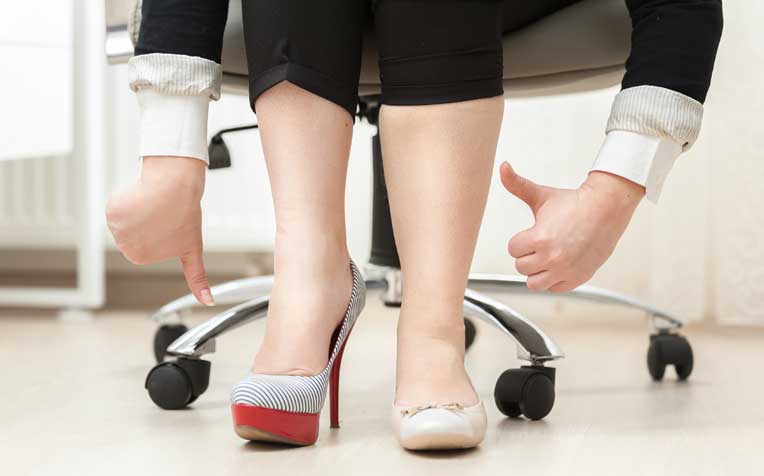
High heels are not good for your feet.
Janet (not her real name) loves high heels, and wore them throughout her teaching career. Standing in uncomfortable heels hour after hour took a toll on her feet, and by the time she retired, she had developed severe bunions. These bumps, which form on the joint at the base of the big toe, prevented her from standing or walking comfortably, a condition that experts say is common.
Mr Manfred Mak Yaoquan, Senior Podiatrist, Department of Podiatry, Singapore General Hospital (SGH), a member of the SingHealth group, said, "Many of our patients with foot problems are women who have either been wearing high heels for prolonged periods or have been forcing their feet into ill-fitting shoes. Often, vanity is the main cause."
According to Mr Mak, who sees about 50 women every month for high-heel-related problems, an increasing number of younger women, some in their late 20s, are getting treatment for problems like bunions, heel spurs and hard skin on their feet. "High heels are not good for feet. If you have to wear them, the maximum heel height should be one to two inches," he said.
Squeezing broad feet into shoes that are too narrow is also not advisable. Many women believe that blisters are a natural consequence of the 'breaking-in' process for new shoes, but Mr Mak said these should not continue to form after the second or third wear.
If the shoe fits
"Just because your foot can fit into a shoe doesn’t mean it’s a good fit. There are many soft tissues in the foot which shouldn’t be compressed," said Mr Mak. One way of ensuring a proper fit is to remove the shoe’s insole, put it on a flat surface, and then place the foot over it. If the foot is too large for the insole, the shoe is too small.
Apart from fitting well, a good pair of shoes should also hold the feet down properly with features such as laces, buckles or straps. Elastic bands are not ideal, as they often don’t offer enough support. Often overlooked too, is the heel counter or the back of the shoe, meant for holding the foot in place and providing support while walking. Footwear with a solid back support or firm back strap is recommended – meaning sandals should be chosen over flip-flops for walking.
Flip-flops such as Japanese-styled slippers are not recommended for those with diabetes because friction from the toe-grip can injure the area between the toes.
While many women are guilty of making poor footwear choices, men fall short when it comes to foot hygiene. "Men usually develop fungal infections between their toes because they tend to sweat more and don’t dry their feet properly. They also often neglect to change their socks daily," said Mr Mak. He also had a word of caution for women who visit nail salons. "If, for instance, instruments used in nail salons are not cleaned properly, fungus spores and bacteria can spread easily from one customer to the next," he said.
Ultimately, personal foot hygiene and good foot health are one's own responsibility. For a start, change socks daily, moisturise dry spots and choose footwear that fits well. While it may be counterintuitive for many women, "common sense and not vanity should prevail to ensure good foot health," said Mr Mak.
Ref. V10
Contributed by

















 Get it on Google Play
Get it on Google Play